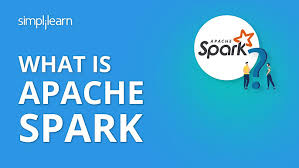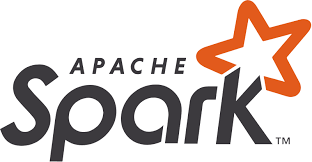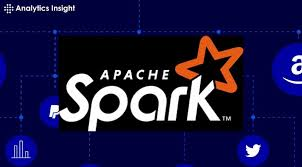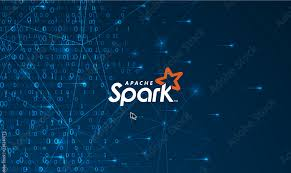Apache Spark: A Comprehensive Introduction 2024
In the realm of big data, the ability to process and analyze massive datasets quickly and efficiently is critical. Apache Spark, a unified analytics engine for big data processing, has become a cornerstone technology. Known for its speed, flexibility, and ease of use, Spark powers complex data pipelines, machine learning workflows, and real-time analytics.
This blog explores what Apache Spark is, its key features, components, and why it’s a game-changer for big data analytics.
http://What is Apache Spark?

Apache Spark is an open-source, distributed cluster-computing framework designed for fast and general-purpose big data processing. By running computations in memory and supporting various workloads, Spark extends the capabilities of traditional MapReduce while maintaining compatibility with the Hadoop ecosystem.
Key Features of Apache Spark
- Speed:
- Processes data up to 100x faster than Hadoop MapReduce by leveraging in-memory computing.
- Generality:
- Supports diverse workloads, including batch processing, iterative algorithms, interactive queries, and streaming analytics.
- Ease of Integration:
- Seamlessly integrates with tools like Hadoop (HDFS), Kafka, and AWS.
- Flexible APIs:
- Provides simple APIs in Java, Python, Scala, and SQL, making it accessible for a wide range of developers.
Core Components of Apache Spark

Spark is built on a unified stack, consisting of the following key components:
1. Spark Core
- The foundation of the Spark framework, handling:
- Task Scheduling: Manages distributed task execution.
- Memory Management: Optimizes in-memory data storage.
- Fault Recovery: Ensures resilience during node failures.
- Introduces Resilient Distributed Datasets (RDDs):
- Immutable collections of data distributed across the cluster.
- Enable parallel processing with fault tolerance.
2. Spark SQL
- A module for working with structured data.
- Supports SQL queries, Hive Query Language (HQL), and programmatic data manipulation.
- Example:pythonCopyEdit
df = spark.read.csv("/path/to/data.csv", header=True, inferSchema=True) df.createOrReplaceTempView("table") result = spark.sql("SELECT column, COUNT(*) FROM table GROUP BY column") result.show()
3. Spark Streaming
- Enables real-time processing of live data streams, such as:
- Web server logs.
- Social media feeds.
- Provides the same fault tolerance and scalability as Spark Core.
- Example:pythonCopyEdit
stream = spark.readStream.format("socket").option("host", "localhost").option("port", 9999).load() query = stream.writeStream.outputMode("append").format("console").start() query.awaitTermination()
4. MLlib (Machine Learning Library)
- A built-in library for scalable machine learning tasks, offering:
- Classification, regression, and clustering algorithms.
- Feature extraction and model evaluation tools.
- Example:pythonCopyEdit
from pyspark.ml.feature import VectorAssembler from pyspark.ml.regression import LinearRegression assembler = VectorAssembler(inputCols=["feature1", "feature2"], outputCol="features") data = assembler.transform(df) lr = LinearRegression(featuresCol="features", labelCol="target") model = lr.fit(data)
5. GraphX
- A graph processing library for analyzing relationships in large datasets, such as social networks.
- Includes common algorithms like PageRank and triangle counting.
Cluster Management in Spark

Spark can scale efficiently across thousands of nodes, supported by various cluster managers:
- Hadoop YARN:
- Integrates with Hadoop ecosystems for resource management.
- Apache Mesos:
- Supports multi-framework resource sharing.
- Standalone Scheduler:
- Simplified setup for running Spark independently.
- Kubernetes:
- Enables Spark to run on containerized environments.
Applications of Apache Spark

1. Batch Processing
- Use Case: Cleaning and transforming large datasets.
- Impact: Faster ETL pipelines and reduced processing time.
2. Real-Time Analytics
- Use Case: Monitoring user activity on e-commerce platforms.
- Impact: Personalized recommendations and fraud detection.
3. Machine Learning
- Use Case: Training predictive models on large datasets.
- Impact: Scalable training for real-time predictions.
4. Social Media Analytics
- Use Case: Sentiment analysis of user comments and posts.
- Impact: Improved brand engagement and market insights.
Advantages of Apache Spark

- High Performance:
- In-memory computation accelerates processing speed.
- Flexibility:
- Supports multiple workloads and programming languages.
- Scalability:
- Handles petabyte-scale datasets effortlessly.
- Ease of Integration:
- Works seamlessly with popular big data tools and frameworks.
Challenges with Apache Spark
- Memory Usage:
- High memory demands require careful resource allocation.
- Complexity:
- Requires expertise in distributed computing for advanced use cases.
- Cost:
- High-performance clusters can be expensive to maintain.
Conclusion
Apache Spark is a game-changing framework for big data analytics, enabling organizations to process, analyze, and gain insights from massive datasets with unmatched speed and flexibility. Whether you’re working on real-time analytics, machine learning, or graph processing, Spark provides the tools to handle diverse workloads effectively.
Are you ready to explore the power of Apache Spark? Start building scalable, data-driven solutions today!